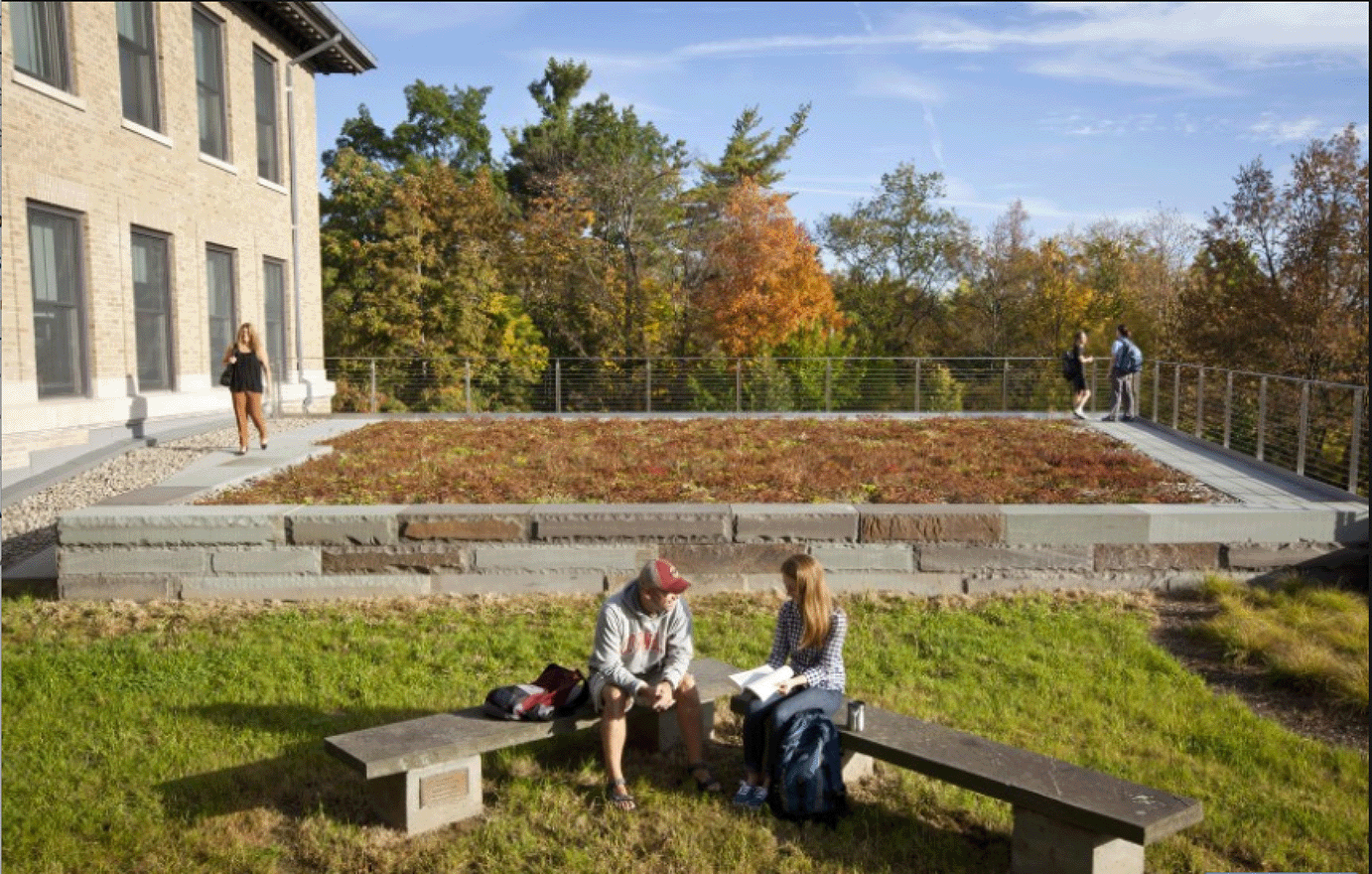![]()
Fernow Green Roof and Rain Garden
Sustainable Landscapes Trail at Cornell University
Rain gardens that divert storm water from paved areas and roofs, and channel it into the ground using a well-draining soil reduces the amount of polluted water flowing directly to streams and lakes. Plants that are adapted to alternately wet and dry conditions are planted to help entrain precipitation and transpire it , which reduces the amount of water that is drained. An extensive green roof consists of a shallow layer of light-weight soil and plants that also trap precipitation and prevent it from going into storm drains.
Return to Sustainable Landscape Trail Sites Homepage

Students lounging on Fernow Hall Green Roof. Source: Jon Reis
Why is this site sustainable?
In 2011, after Fernow Hall was renovated, a rain garden and green roof were installed adjacent and on top of the new classroom that was built on the east side of Fernow.
The rain garden is fed by channeled storm water from the roof into a low area via gutters. The garden is a ‘bowl’ with high drier areas and low areas that are more apt to experience temporary saturated conditions after a rain.
Some of the shrubs that were planted in the wet condition are Cephalanthus occidentalis, Buttonbush, Morella pensylvanica, Bayberry and Cornus sericea, Red Twigged Dogwood. On the higher, drier walls of the garden, Juniperus procumbens ‘Nana, Dwarf Japanese Garden Juniper was planted.
On top of the new classroom, an extensive green roof was planted with sedums. The soil in this area is lightweight consisting of expanded shale and compost. The depth of the soil is only 3-4” deep, requiring plants that have minimal water needs.
